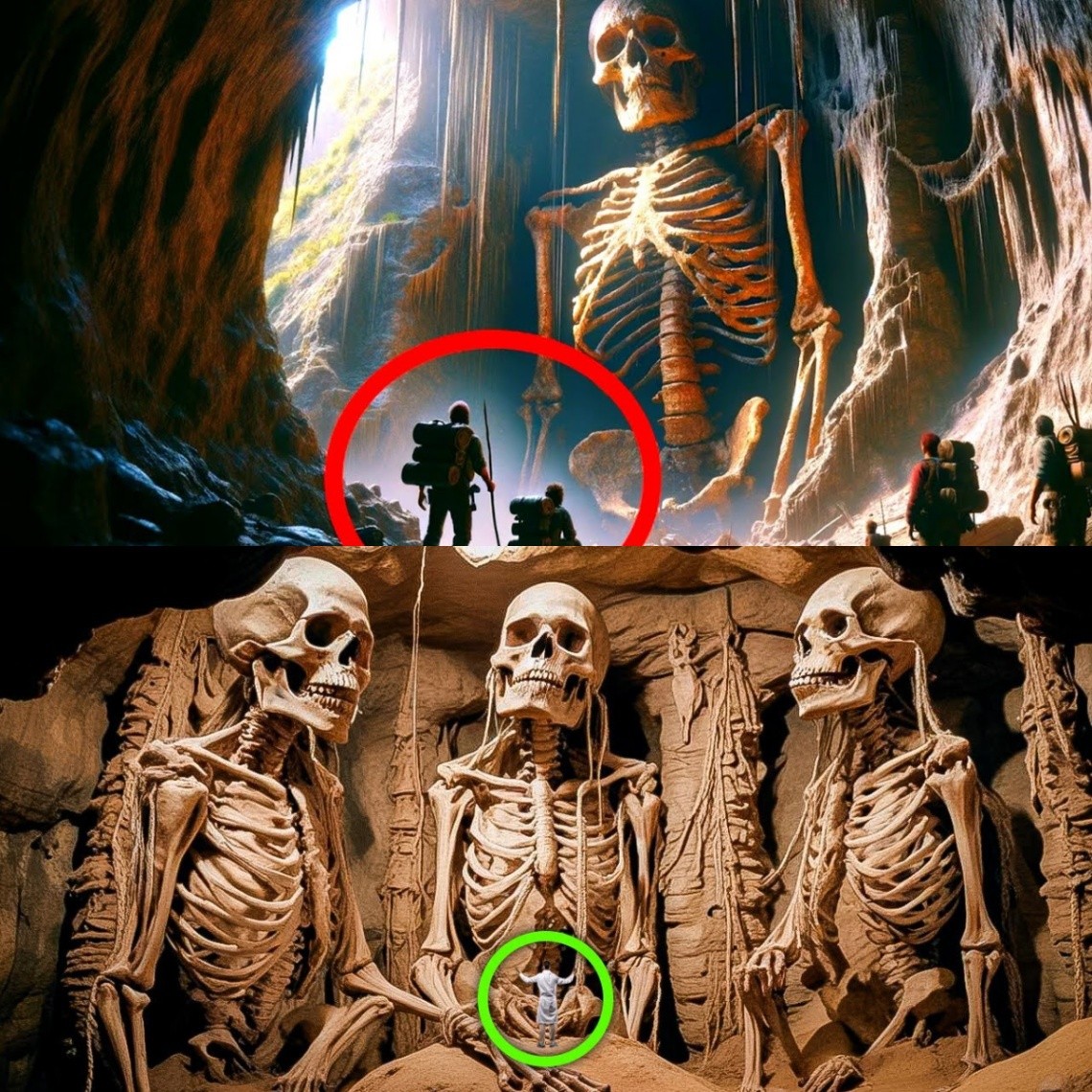How UK Tried & Failed to Get Rid of it’s Second Aircraft Carrier
This aircraft carrier is like a red-headed child out of Wedlock that nobody wanted, but they couldn’t get rid of her.
Hms Prince of Wales, the sister ship of Hms Queen Elizabeth, is the Royal Navy’s second aircraft carrier.
While this carrier looks mighty and strong on the outside, on the inside things aren’t so good, which is why she got the nickname the “unlucky ship”.
Hms Prince of Wales also has a complicated relationship with its parent, the Government of the United Kingdom.
You see, back in 2010,, as part of the Strategic Defence and Security Review, the British government concluded that the Royal Navy only needed one aircraft carrier, not two.
However, by that time the Navy had already ordered two carriers.
The government wanted to drop the second carrier, but, due to contractual obligations with the shipyards, it would have been more costly to cancel the second carrier and incur the financial penalties than just finish building it.

So the construction of Hms Prince of Wales continued.
The government had decided that they would either sell her to an ally country or simply mothball the carrier right away – that is, immediately retire her and place her in the reserve fleet.
Well, that sounds like a giant waste of money, doesn’t it?
However, as we dug a little deeper, we came to a different conclusion.
Calling Hms Prince of Wales a “waste of money” would be premature, but the reason is Not What You Think.
As the construction of Hms Prince of Wales continued, she was still destined to be adopted by an ally country or put into early retirement, But in 2014,, the carrier’s parent started having second thoughts.
During the 2014 Nato Summit, Prime Minister David Cameron proclaimed that the carrier would be commissioned rather than sold or mothballed.
One year later, in 2015,, the fate of the carrier was sealed.
Hms Prince of Wales was to join the Royal Navy’s family as a result of the 2015 Strategic Defence and Security Review.
You’d think that would be it – the family lived happily ever after, But you’d be wrong.
In December 2019, just a few months before Hms Prince of Wales was to be commissioned, there were ongoing calls to mothball her yet again.
In fact, such calls continue to this day.
As recently as February 2023, you can find politicians wanting to decommission her for the simple reason of saving cash.
Now here’s the part where the story turns a little dark.
You see, things are not looking that good for the Uk Armed Forces.
Why Some Currently Want to Retire HMS Prince of Wales
A senior Conservative Mp has claimed that Britain’s Armed Forces would “last just five days in a wᴀʀ”.

The British Army is currently the smallest it has been in four centuries.
Back in January 2023, a senior Us general stated that the British Army was no longer regarded as a “tier one force” and continued to clarify: “it’s barely tier two”.
At the same time, the Royal Navy is less than half the size it was during the Falklands wᴀʀ.
Taking into account all the military equipment sent to Ukraine which now needs to be replaced, and the rate of inflation in the United Kingdom, this means that real military spending is in decline.
The British Military needs cash and the government ain’t giving it.
According to the British Ministry of Defense, last year’s budget was 45.9 billion pounds and taking into account a 10% inflation means that military spending must increase by 4.6 billion pounds to 50.5 billion to account for the rising costs.
In fact, the Uk military is requesting between 8 and 11 billion pounds over the next two years just to keep up with inflation.
Yet under current plans, the Uk government wants to raise its defence budget only by 700 million pounds over the next two years.
It should be clear by now that if the British Armed Forces don’t receive more money to keep up with inflation, their only other option is to cut.
And this is where the neck of Hms Prince of Wales comes in – the perfect candidate to be sunk, I mean cut.
Remember when I said this carrier was an “unlucky ship”?
Well, besides the family drama, it just so happens that Hms Prince of Wales tends to spend more time in the drydock … than in water.
Let me elaborate.
When Hms Princes of Wales hits national headlines, most of the time it’s for the wrong reasons.
Why HMS Prince of Wales is an Unlucky Ship
For example, in May 2020, there was flooding aboard the ship, with water gushing to almost seat level due to a burst pipe.

While the incident was described as minor, the aircraft carrier had to return to Portsmouth and cut its five-week sea trials short as a precautionary measure.
In October 2020, there was an even more serious flooding aboard the ship.
The electrical cabinets in one of the engine rooms were submerged for over 24 hours.
It was especially embarrassing for the Royal Navy because at the time the ship was preparing to sail to the Us for the F-35b integration trials.
This trip to America took years of planning, but now the Brits had to say “Sorry, we can’t make it”.
Due to that flooding, the ship was forced to spend 8 months in drydock for repairs.
But it gets worse.
Sponsor alert, You think you have what it takes to make tough decisions like World wᴀʀ Ii General.
Well, you can now test your skills in Siege World wᴀʀ 2, a military Pvp Card game that is quickly becoming a favorite, and it’s also helping us pay the bills this week, so we can keep the lights on.
Not only do you go to battles against players from all over the world, this game is constantly releasing new content, including new challenges, twice a week.
If you play your cards right, you can deploy troops, orchestrate air strikes, plant minefields and even form alliances to dominate the leaderboard.
Just scan this barcode or click the link in the description to get started.
General.
In August 2022, while acting as the flagship of Nato, Hms Prince of Wales was scheduled to undertake exercises with the Us Navy during a 3-month trip.
This involved flight trials of the F-35B.
The ship departed Portsmouth and was about to cross the Atlantic to visit the Us, Canada and the Caribbean, but she experienced a mechanical malfunction and had to anchor next to the Isle of Wight to assess the damage.
Divers were sent to investigate the problem and they found significant damage to the starboard shaft and propeller.
The shaft is a combination of steel poles joined together with a shaft coupling, one of which had failed.

According to the engineers, the carrier broke down due to “Elementary Misalignment” mistakes.
This put the ship out of service at least until the spring of 2023..
Interestingly, during the 2019 sea trials, issues with the propeller shaft had been discovered.
Similar issues were also found on the port side of Hms Prince of Wales, so the other shaft had to be fixed too.
The shafts on the Hms Queen Elizabeth sistership were also inspected just in case, but no issues were found.
It was this second major incident that gave Hms Prince of Wales the reputation of being a trouble-plagued ship.
Some sailors called her an “unlucky ship”, especially that her sistership, Hms Queen Elizabeth, did not have the same issues with the shafts.
The conservative Mp, Mark Francois, said the Uk cannot have a “carrier with a limp”.
Why Most Carriers Can Be Considered Unlucky
After four years since commissioning, Hms Princes of Wales had spent more time in repair shops than at sea.
Yeah, it’s a bummer, but let’s be realistic here.
This is an aircraft carrier.
A quick look at other navies around the world with less than a handful of aircraft carriers paints a similar picture.
Russia spent billions of dollars on its only aircraft carrier, Admiral Kuznetsov, which was plagued with issues and has been in repair for the past several years.
The French spent 13 years building the nuclear-powered Charles De Gaulle aircraft carrier, which had many technical issues.

Not only did its propeller fall off during sea trials, but its flight deck also had to be lengthened to safely operate the E-2c Hawkeye prior to the carrier’s commissioning.
The Chinese and Indians did not exactly have a smooth experience either when dealing with the ex-Soviet carriers Varyag and Baku.
For example, India’s Ins Vikramaditya, which was refurbished by the Russians, was delivered 5 years late and at double the cost.
Considering that Queen Elizabeth-class aircraft carriers were an entirely new design, issues are expected.
Even Americans, who are leaders in aircraft carriers, had multiple issues with electromagnetic catapults, advanced arresting gear and weapons elevators in their newest class of aircraft carriers.
That’s just how it is – there’s no way around it.
Why Royal Navy Downsized From 3 to 2 Carriers & Why its a Bad Idea
But why did the Royal Navy need two aircraft carriers to begin with?
Prior to the Queen Elizabeth-class, the Royal Navy operated three light carriers for roughly 30 years — Hms Invincible, Hms Illustrious and Hms Ark Royal.
But why operate three and not two or four?
This has to do with the “Rule of Thirds” that naval fleets usually follow.
Let’s use the Us Navy as an example.
Americans have 11 aircraft carriers, but it doesn’t mean that they can all be active simultaneously.

At any given time, one third of the carrier fleet is deployed, another third is preparing for or coming off a deployment and the last third is undergoing maintenance.
This means that for the Us Navy, up to 4 carriers are usually available for operation, and in case of an emergency, that number can probably grow to 5 or 6..
It’s worth mentioning that the Rule of Thirds is just a rule of thumb.
For example, many navies rely on the Rule of fourths when planning the deployment schedule of ballistic missile submarines.
One submarine is deployed, one is coming off deployment, one is preparing for deployment and one submarine is in maintenance.
There’s also a rule of halves, which results from budgetary pressures on politicians to increase military operational capacity.
This is done by eliminating the preparation and comeback phases, just like the Brits did when they downsized from a 3-carrier fleet to a 2-carrier fleet.
This means that Hms Queen Elizabeth, Hms Prince of Wales and their crews would have to work harder and longer to at least have one operational carrier at any given time.
In fact, this is exactly what happened when Hms Prince of Wales broke down prior its trip to the Us and, as a result, Hms Queen Elizabeth had to sail to the Us instead.
While you can rely on a two-phase rotation for short periods of time, some military academics insist that it is counterproductive.
Prolonged deployments not only result in premature failure of equipment, but they also decrease the psychological well-being of the crew, and that can increase the turnover of personnel.
Some further argue that navies should go to 4 or even 5-phase rotations in order to increase their ability to conduct sustained military operations.
All that said, as part of the cost cutting measures, the Uk downsized from three aircraft carriers to two.

In theory, this means that while one carrier is in maintenance, the other is deployed or should be available for deployment.
Are aircraft carriers a waste of money?
Why not spend the money on schools, roads and healthcare?
Just so you know, this has been, in fact, a trend for the past several decades.
The thing is, not only are aircraft carriers expensive, but they also take up to a decade to build.
You can’t just order them off the menu when you feel like it, so some planning in advance is required.
Just imagine if the United Kingdom did not have Hms Hermes and Hms Invincible available to be deployed to fight Argentina during the Falklands wᴀʀ.
While for the most part, aircraft carriers are viewed as offensive weapons that project military power, they can also be used in defensive operations, Since the Uk has multiple small territories spread across the planet.
With the help of its aircraft carriers, the Royal Navy has the ability to protect its citizens even when they are far away.
To call an aircraft carrier a waste of money is a political statement rather than a military statement.
Depending on the political environment of the country, an aircraft carrier could be a waste of money.
The best way to know whether building an aircraft carrier was worth spending so much money on-
And you’d love this- is to evaluate it after its retirement.

Clearly, the fact the Uk continued building aircraft carriers after the experiences of Hms Hermes and Hms Invincible during the Falklands wᴀʀ is a testament to that.
With a projected service life of 50 years, both Queen Elizabeth-class carriers represent an excellent value for money.
They are multi-purpose platforms that can be upgraded and improved throughout their lifetime, and these British carriers are not even that expensive.
A Queen Elizabeth-class carrier costs one quarter of an American Ford-Class carrier.
The British carriers are conventionally-powered as opposed to nuclear-powered, meaning that they have to be frequently refueled at sea.
But aside from the smaller price tag, they can enter ports and areas where the American nuclear-powered supercarriers are not allowed.
To accurately evaluate whether Hms Prince of Wales was worth the money is to wait until the year 2069 to find out.
Why QE Carriers are Considered a PART-TIME Fleet
There are multiple other signs suggesting that the Royal Navy struggles to afford its aircraft carrier fleet.
It’s not just about the aircraft carrier, but also the strike group support ships and aircraft.
To fund the construction of the Queen Elizabeth-class ships, some sacrifices had to be made, For example the decommissioning of Hms Ocean, cancelling the last two type 45 destroyers, selling two type 23 frigates to Chile and scrapping the 2 remaining amphibious assault ships.
While the loss of the capabilities that were mentioned cannot be entirely attributed to the costs associated with building the Queen Elizabeth-Class, the aircraft carriers’ procurement was a factor.
For example, one of the reasons for selling Hms Ocean to Brazil was to free up $75 million dollars of budget.
That budget would then later be used to modify the two new aircraft carriers so they could support amphibious landings.
Interestingly, in March 2020, the Royal Navy dropped the amphibious requirements from the carriers.

Did the Royal Navy get rid of Hms Ocean for nothing?
The two aircraft carriers also require solid support ships – the ships that carry dry stores, such as ammunition.
Currently, the Royal Navy only has one Rfa, Fort Rosalie, which is supposed to retire in 2028..
The Royal Navy is in the process of acquiring 3 new solid support ships, but the program was delayed for a few years while the government was shopping for good value for money.
The procurement contract was only signed in January 2023, and construction is slated to begin in 2025 at the earliest.
It could be a decade before those three ships are operational.
Going back to the rule of the thirds, not having those three solid support ships alongside the aircraft carriers will result in operational gaps.
The other issue is the aircraft.
You know those things that the aircraft carrier is made for in the first place.
The Queen Elizabeth-class carriers can carry up to 36 F-35bs, but they are envisioned to carry 24 aircraft each.
The Uk has only ordered 48 F-35bs so far, of which 30 have been delivered, with the remainder being delivered by 2025..
The thing is due to the rule of thirds.
48 aircraft are not enough to deploy on two carriers at the same time if the need ever arises.
Only a third of the aircraft fleet can be deployed at any given time due to maintenance and training needs.

Originally, the Uk intended to buy 138 F-35s, with the recent plans calling for the purchase of 74 F-35bs, But who knows when they would be delivered, and so, for the foreseeable future, the Royal Navy does not have enough aircraft to carry 24 on each ship, With the limited number of jets, a reduced escort fleet and the absence of all required support ships.
Some critics refer to Hms Queen Elizabeth and Prince of Wales as a part-time aircraft carrier force.





